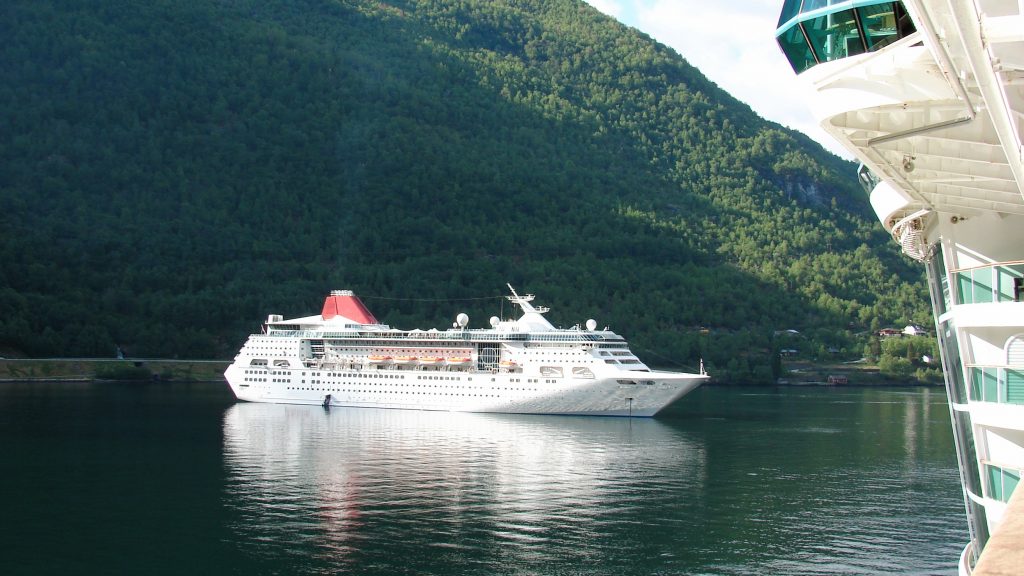
Ahoy, cruisers! While embarking on a cruise vacation is a thrilling occasion, during your voyage you’ll probably hear some words that will make you go “huh?”. Understanding the cruise lingo will guarantee a smoother sailing. So, from Bow to Stern, from Front to Aft, below is a list of the most used words so you can master the language of the seas and sound like seasoned cruiser.
The cruise alphabet
A
AFT: The rear ship section of the ship where you’ll find stunning views and often less crowded spaces.
ANCHOR: A device securing the ship when stationary, ensuring stability and preventing the ship from drifting.
ATRIUM: The central area of the ship, often featuring entertainment or services, and serving as a vibrant focal point for social activities.
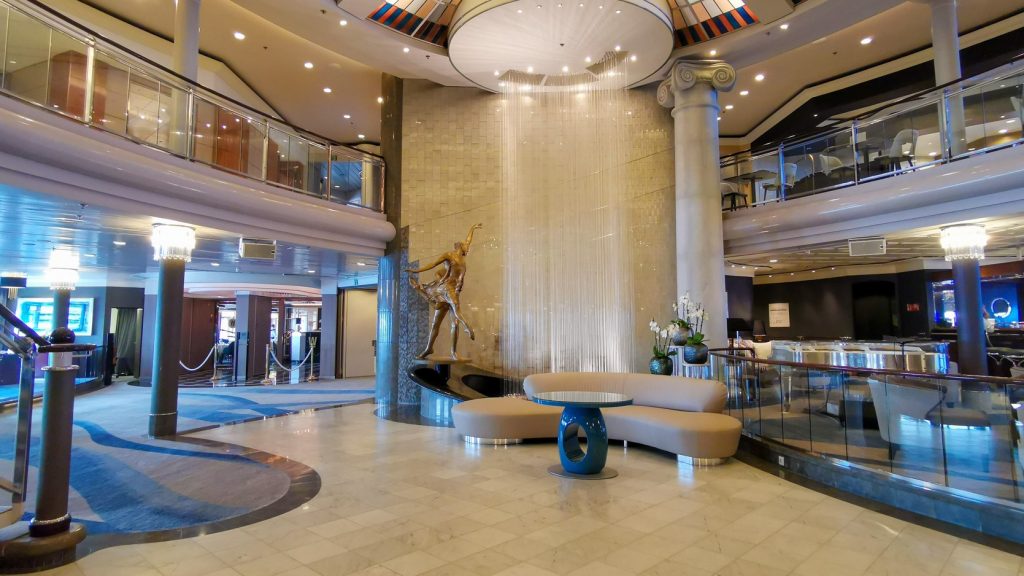
AZIPOD: A type of marine propulsion unit that can rotate 360 degrees, providing enhanced maneuverability for cruise ships.
B
BACK-TO-BACK CRUISES: When a passenger books consecutive cruise itineraries, often without disembarking at the home port between them.
BALCONY CABIN: A stateroom with a private balcony, providing scenic views and a personalized outdoor space.
BEAM: The width of the ship, influencing stability and navigational characteristics. The bean is a critical parameter in ship design.
BERTH: The term “berth” can have different meanings depending on the context. In maritime terms it typically refers to a designated location in a harbor or port where a ship can anchor, moor, or dock. Alternatively the term can also be used for a sleeping space in a cabin, either a bunk or a bed.
BOW: The forward part of the ship, guiding the vessel through the waters, setting the course for your maritime journey.
BOW THRUSTER: A propulsion device located at the front (bow) of a ship, which aids in maneuvering the vessel. It consists of a propeller or fan-like device that generates thrust in either direction, helping the ship to move sideways or turn more easily.
BRIDGE: The navigational control center oft he ship. The bridge is usually located on one of the top decks, where skilled officers steer and manage the ship.

BULKHEAD: A dividing wall or barrier on a ship, enhancing structural integrity and providing compartmentalization for safety.
C
CALVING: The process of glaciers breaking and falling into the sea, a natural phenomenon witnessed on certain cruise itineraries.
CAPTAIN: The authoritative figure responsible for the ship’s navigation, safety, and overall command, ensuring a secure and enjoyable voyage. Sometimes also called Master of the ship.
CASINO: An onboard facility for gambling and entertainment, offering a lively atmosphere for passengers seeking entertainment.
CABIN (stateroom): Your onboard abode, equipped with essential amenities, serving as your home away from home during the cruise.
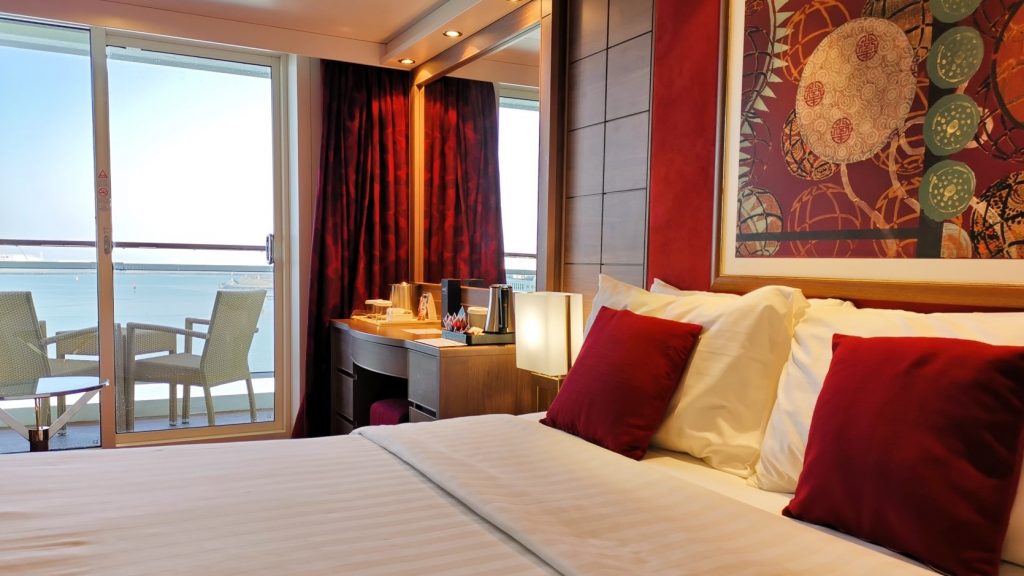
CABIN STEWARD: A dedicated crew member responsible for maintaining and servicing cabins, ensuring passenger comfort.
CLOSED-LOOP SAILING: A cruise itinerary that starts and ends at the same port, offering a convenient round-trip experience for passengers.
COLD IRONING (shore-to-ship power or alternative maritime power): the process of providing shoreside electrical power to a ship at berth while its main and auxiliary engines are turned off.
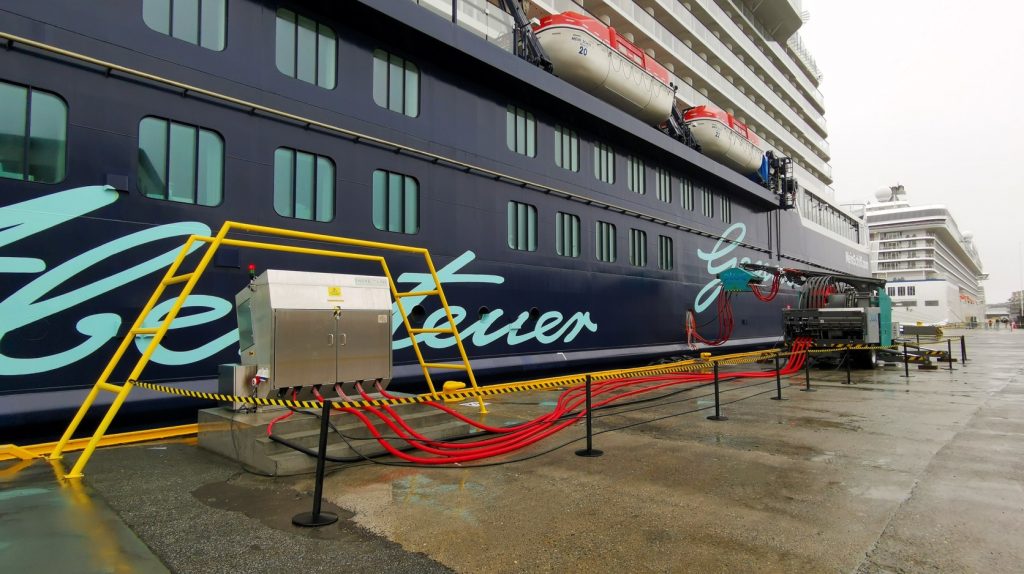
COURTESY HOLD: A temporary reservation without immediate payment, allowing passengers time to finalize their cruise plans.
Also read: The different types of cabins on a cruise ship
CREW MEMBER: An essential part of the ship’s staff, responsible for various roles, contributing to the smooth operation of the cruise.
CRUISE CARD: A personalized card used for onboard purchases and room access, streamlining passenger transactions and services. The cruise card can also come in the form of a smart wearable like Virgin Voyages’ “The Band” or Princess Cruises’ “Ocean Medallion”.
CRUISE DIRECTOR: A staff member in charge of organizing onboard entertainment and activities, ensuring a lively and engaging atmosphere for passengers.

D
DISEMBARKATION: The process of leaving the ship, typically at the end of the cruise, involving organized and efficient procedures.
DOUBLE OCCUPANCY: Pricing structure based on two people sharing a cabin, offering cost-effective options for travelers.
DRY DOCK: A scheduled maintenance period for the ship, involving repairs and renovations, ensuring optimal operational conditions.
E
EMERGENCY DRILL (muster drill): A mandatory safety practice, acquainting passengers with emergency procedures and their muster stations for preparedness in case of an emergency.
EMERGENCY SIGNAL: Alarms or signals indicating a critical situation, prompting immediate passenger and crew response. The general emergency signal is composed of seven short blasts followed by one long blast on the ship’s whistle and internal alarm system.
F
FRIENDS OF BILL W / FRIENDS OF DOROTHY: Meetings for Alcoholics Anonymous or LGBTQ+ groups on board, providing supportive communities for passengers.
FUNNEL: The ship’s smokestack or exhaust system, a distinctive feature visible from afar, contributing to the ship’s character.
G
GALLEY: The ship’s kitchen, where culinary staff, such as chefs and cooks, work to create meals for the passengers and crew on board.
GANGWAY: The walkway connecting the ship to the shore, facilitating smooth embarkation and disembarkation, ensuring efficient passenger transit.
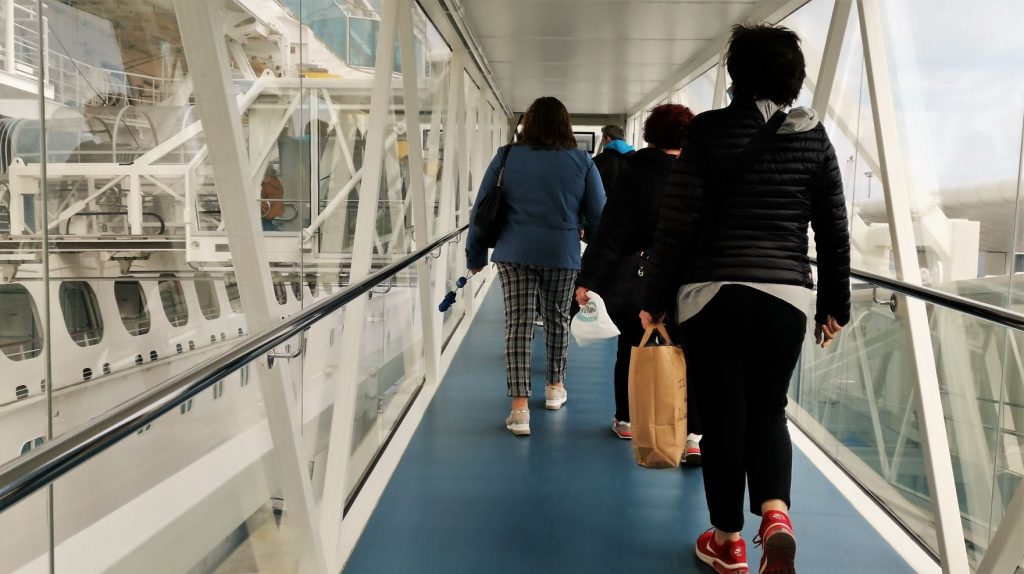
GRT (Gross Registered Tonnage): A measurement of a ship’s total internal volume, influencing its size and capacity, essential for operational planning.
GRATUITIES: Tips or service charges added to your onboard account, recognizing and compensating service staff for their efforts.
GUARANTEE: When you book a certain category of cabin (Interior Cabin, Ocean View, Balcony, Suite) for your cruise without specifying the actual cabin. By booking a guarantee cabin you are guaranteed to be allocated a stateroom within the chosen category but the cruise line will allocate the actual stateroom. Booking a guarantee cabin allows cruise lines flexibility in cabin allocation for passengers.
H
HELM: The ship’s steering apparatus, typically operated by the captain or helmsman, determining the vessel’s direction and course.
HULL: The main body or shell of the ship, providing structural integrity and buoyancy, a fundamental element of ship design. The hull can be used as a canvas to decorate the ship.
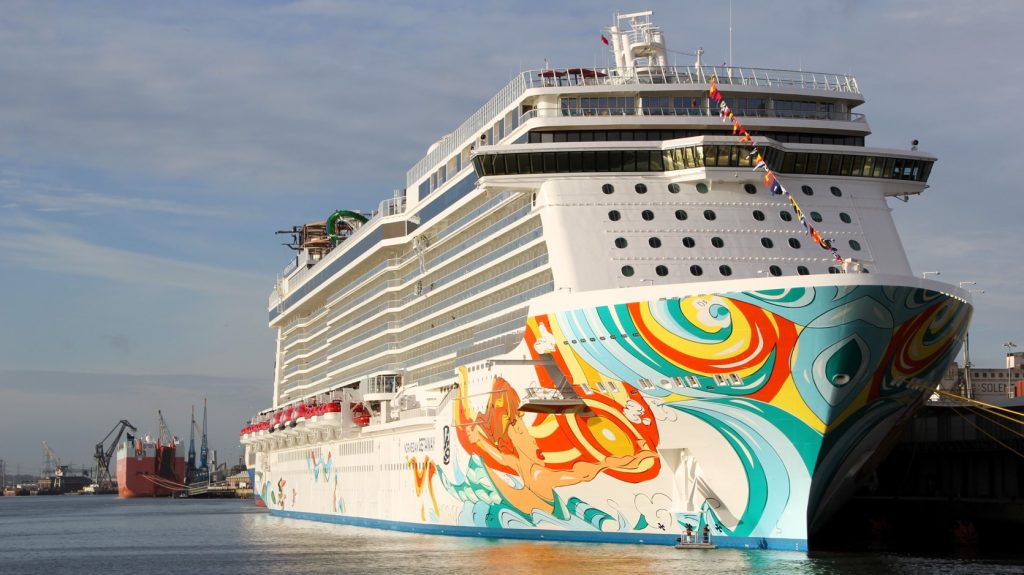
I
ITINERARY: The planned route and schedule of a cruise, outlining the ports of call and activities during the voyage.
INAUGURAL CRUISE: The first voyage of a newly launched cruise ship, often with special events and celebrations.
INTERPORTING: The practice of a cruise ship using multiple ports as embarkation or disembarkation points during a single itinerary.
J
JETTY: A structure extending into the water where the ship may dock, simplifying port access and facilitating efficient embarkation and disembarkation.
K
KNOTS: The unit of speed used at sea. One knot is equivalent to approximately 1.15 miles (1.85 kilometers) per hour. Modern cruise ships typically maintain an average speed of around 20 knots, which is approximately 23 miles (37 kilometers) per hour. These ships can achieve maximum speeds of up to 30 knots, equivalent to about 34.5 miles (56 kilometers) per hour.
L
LANYARD: A cord worn around the neck to hold cruise cards, ensuring convenient access and security for passengers.
LEEWARD: The side of the ship sheltered from the wind, providing a more tranquil environment during windy conditions.
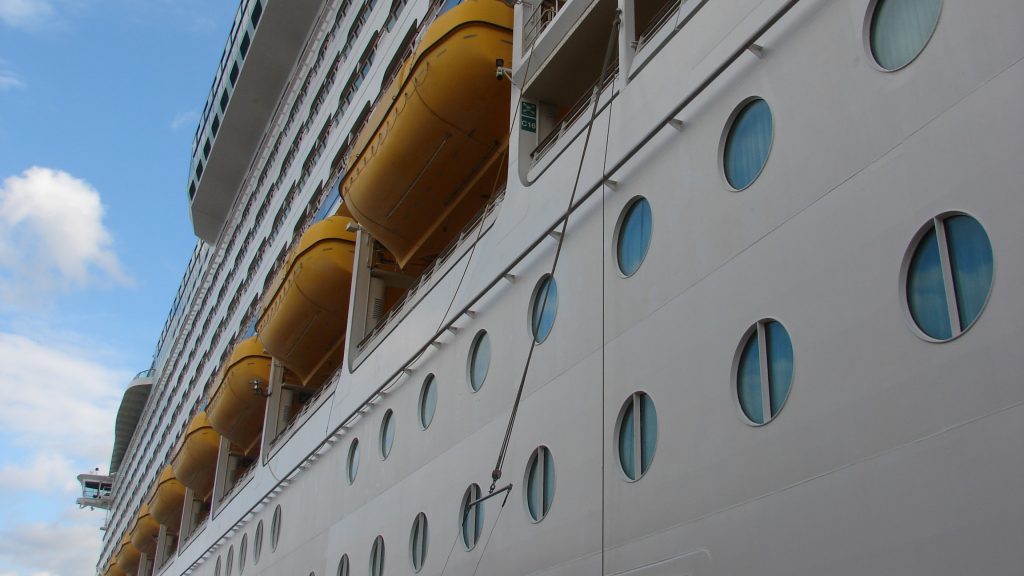
LIFEBOAT: A crucial safety measure, providing evacuation options in emergencies, ensuring the well-being of passengers and crew.
LIFEBUOY: A floatation device on board for life-saving purposes, enhancing passenger safety during emergencies.
LIFE JACKET: A personal floatation device provided for safety drills and emergencies, ensuring passenger readiness in critical situations.
LIDO – LIDO DECK: A vibrant open deck area offering passengers a space for leisure and relaxation. On the Lido Deck you will find pools, dining, and entertainment facilities, serving as a hub for social activities.
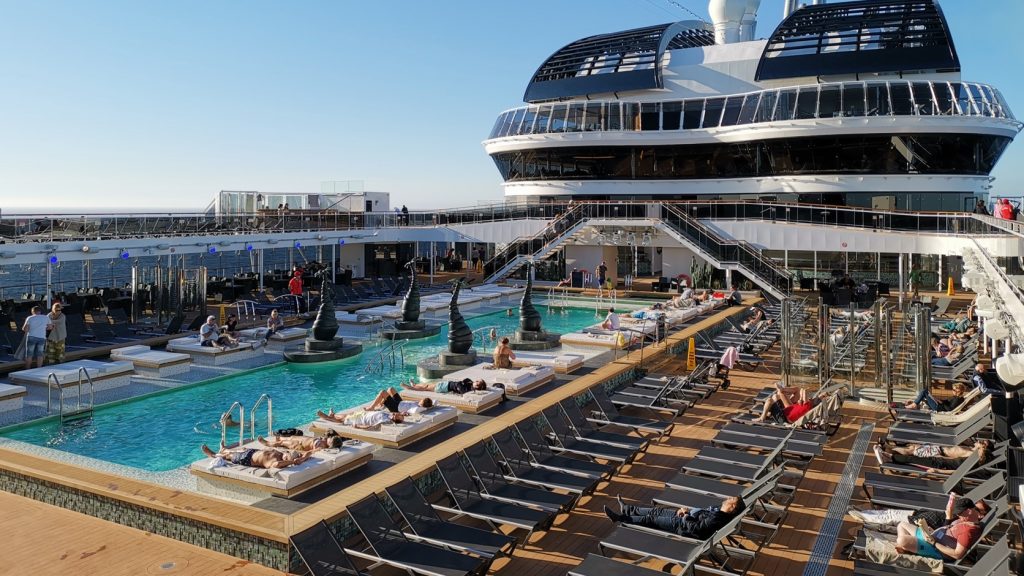
LNG (liquefied natural gas): LNG is an alternative to traditional marine fuels and is currently the most environmentally friendly fuel for commercial maritime operations. LNG fuel is used to generate the energy needed for propulsion.
M
MUSTER DRILL (emergency drill): A mandatory safety drill, acquainting passengers with emergency procedures and their muster stations for preparedness.
MUSTER STATION: The place on the ship where passengers need to go for the Muster or Emergency Drill. It is also where passengers should assemble in the event of an emergency. From the Muster Station guests will be escorted to the Lifeboat in case of an emergency.
MDR (Main Dining Room): The ship’s primary dining venue, offering diverse culinary experiences for passengers.
MIDSHIP: The central part of the ship, often featuring amenities and services, providing convenient access for passengers.
MOORING: The process of securing the ship to a dock or anchor point, ensuring stability and safe docking procedures. Mooring Lines or cables are used to secure a ship at a berth.
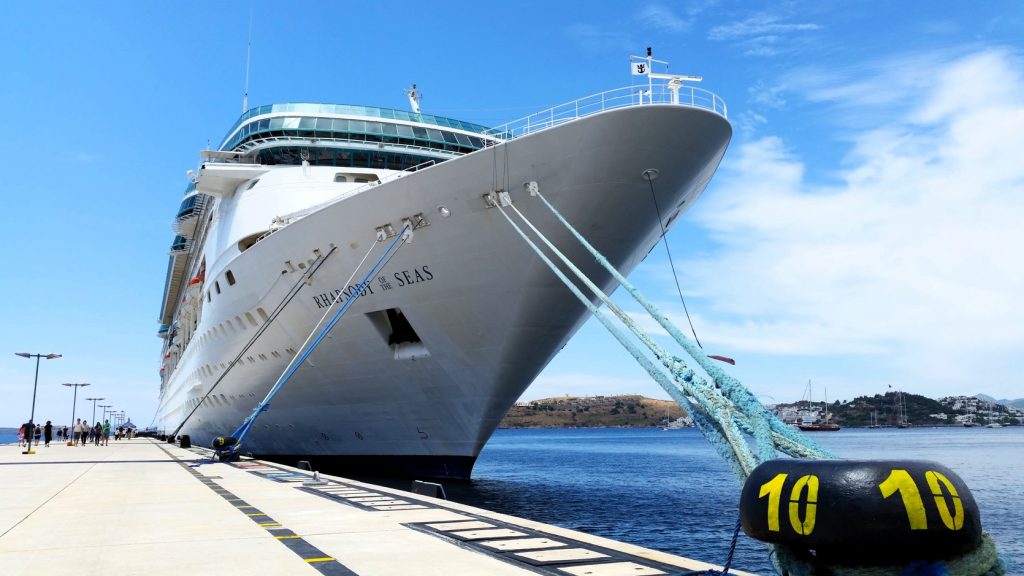
N
NAUTICAL: Relating to navigation, sailors, or the sea, an encompassing term for maritime activities and terminology.
NAUTICAL MILES: A unit of measurement in the maritime world. A nautical mile is slightly longer than a mile on land, 1.1508 miles (1852 meter).
NOROVIRUS: A contagious virus causing gastrointestinal issues, prompting strict hygiene measures on ships to prevent outbreaks.
O
OPEN-JAW SAILING: A cruise that begins and ends at different ports, offering diverse itineraries for passengers seeking varied experiences.
OBC (Onboard Credit): Money credited to your shipboard account for onboard spending, providing flexibility for passenger purchases.
OUTSIDE CABIN: A stateroom with a window or balcony, offering panoramic views and natural light, enhancing the onboard experience.
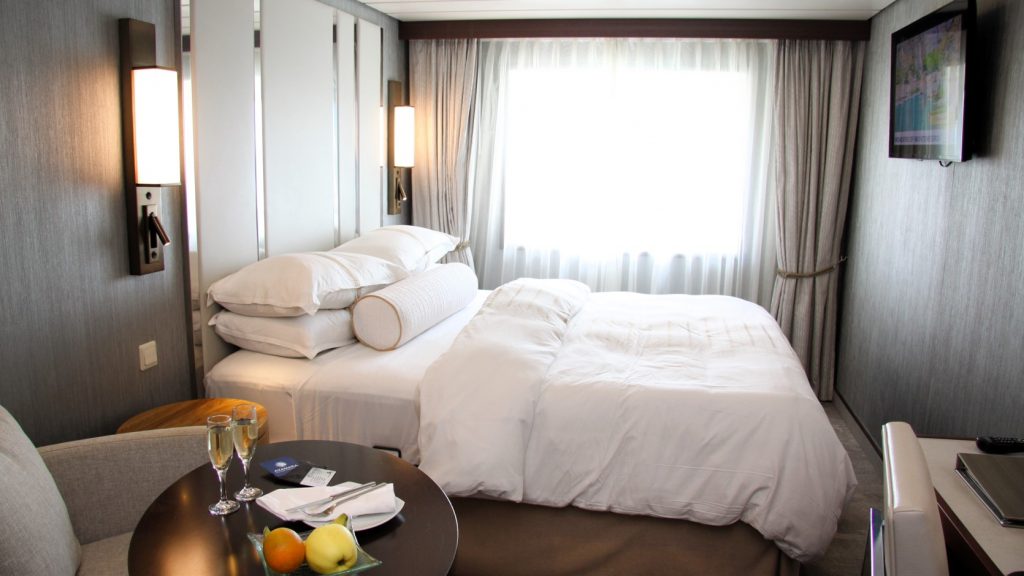
P
PILOT: A specially trained and licensed maritime professional known as a harbor pilot or marine pilot. Pilots play a crucial role in navigating large vessels, such as cruise ships, safely through challenging or congested waterways, particularly when entering or leaving ports. While pilots guide the ship through challenging areas, the ship’s captain remains ultimately responsible for the vessel’s safety and navigation.
PLAQUE CEREMONY: A special event or ritual that typically marks a significant moment or milestone in the ship’s history or the voyage itself. The ceremony often involves the installation or unveiling of a commemorative plaque that bears an inscription or information related to the occasion, such as the first visit to a port of call.
PORT OF CALL: A scheduled destination during the cruise where the ship docks, allowing passengers to explore and experience diverse cultures.
Also read: What to pack for your first cruise adventure
PORTER: A crew member assisting with luggage handling, ensuring efficient embarkation and disembarkation processes for passengers.
PORTHOLE: A small, circular window on a ship, providing natural light and views for cabins without larger windows.
PORTSIDE: Portside refers to the left side of a ship or boat when you are facing forward (towards the bow). The term “port” comes from the fact that the left side of a ship was traditionally the side that faced the port (harbor) when docked.
PROMENADE: A deck or area for leisurely strolls, often encircling the ship, providing scenic views and a serene atmosphere. Some larger ships also offer interior promenades lined with restaurants, bars and shops.
PULLMAN BED: Invented by George M. Pullman, a Pullman bed is a top bunk bed that pulls down from the ceiling or folds out from the wall. Pullman beds use regular mattresses making them more comfortable than sofa beds.
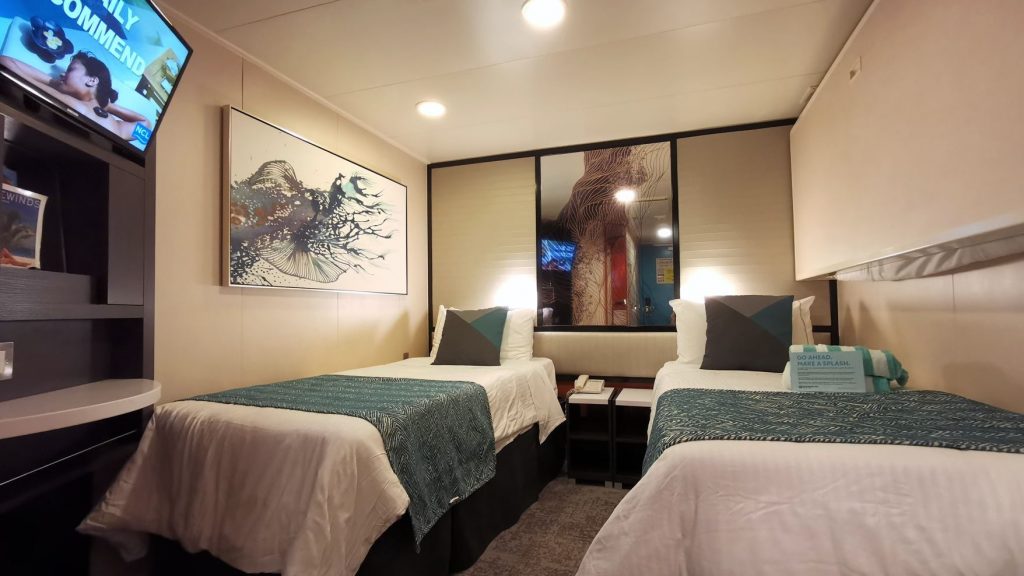
PURSER: The officer managing the ship’s financial matters and passenger services, ensuring smooth operational and service transactions.
R
REPOSITIONING or REPO CRUISE: A cruise moving a ship from one region to another for a new seasonal itinerary, offering unique experiences for passengers. Transatlantic cruises for example are cruises with itineraries from ten to sixteen nights, including at least six nights sailing across the ocean.
S
SAIL AWAY: The special event or experience that often takes place at the beginning of a cruise. During the sail away, passengers gather on the decks to celebrate and enjoy the departure from the embarkation port.
SHORE EXCURSION: Organized trips or activities at the ports of call, enriching the onshore experience for passengers, providing opportunities for exploration.

SHORE POWER (Cold Ironing, Shore-to-Ship power or Alternative Maritime Power): Electrical power from the shore to a vessel at berth. This process allows the auxiliary engines of the ship to be turned off.
SHOULDER SEASON: The time between peak and off-peak seasons, offering favorable prices and weather conditions for cruise travel.
SOLAS (International Convention for the Safety of Life at Sea): The international treaty that sets minimum safety standards for the construction, equipment, and operation of ships. The primary goal of SOLAS is to ensure the safety of human life at sea, as well as the safety and environmental protection of ships.
Also read: Twelve tips to help you book your first cruise
STABILIZERS: Devices on the ship used to reduce roll and enhance stability. Stabilizers ensure a smoother sailing experience for passengers, especially in rough seas.
STARBOARD: The right side of the ship when facing forward, identified by the green navigation light, a crucial term for navigation and communication.
SUITE: A premium and more spacious cabin with enhanced amenities, providing a luxurious and comfortable onboard experience.
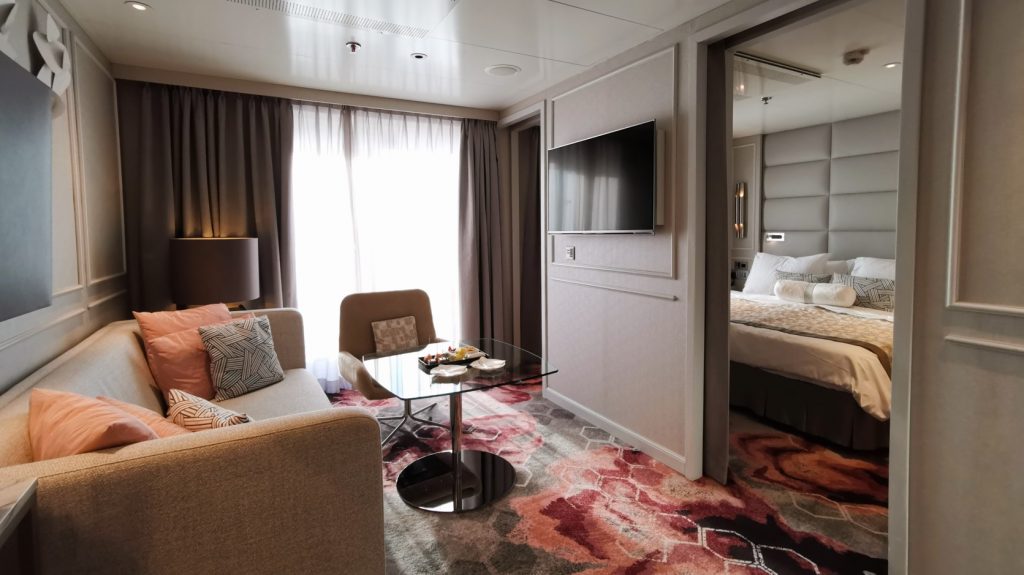
T
TENDER: A smaller boat used to transport passengers to and from the ship when it cannot dock directly, ensuring access to remote or shallow ports.
TIPS: Gratuity given to service staff for exceptional service, acknowledging and appreciating the efforts of onboard crew members.
Also read: The most luxurious suites at sea
TURNAROUND DAY: The day a cruise ship disembarks one set of passengers and embarks a new group, involving intensive ship cleaning and preparation.
U
UPGRADE: Moving to a higher-category cabin or receiving additional amenities, enhancing the overall cruise experience for passengers.
V
VIRTUAL BALCONY: A simulated window displaying real-time exterior views in interior cabins, providing a unique and immersive experience for passengers.
W
WAKE: The turbulent track of disturbed water left behind as the ship moves through the water. It is created by the motion of the ship’s hull as it displaces water. The wake is most noticeable behind the Stern (rear) of the ship. Generally, a ship’s wake consists of two parts. The V-Wake or Bow Wave is the V-shaped pattern formed at the Bow (front) of the ship as it moves forward. It is created by the displacement of water as the ship’s hull pushes through it. The Stern Wave or Aft Wake is the pattern of turbulent water left behind the stern of the ship. It is often characterized by a frothy, churning appearance.
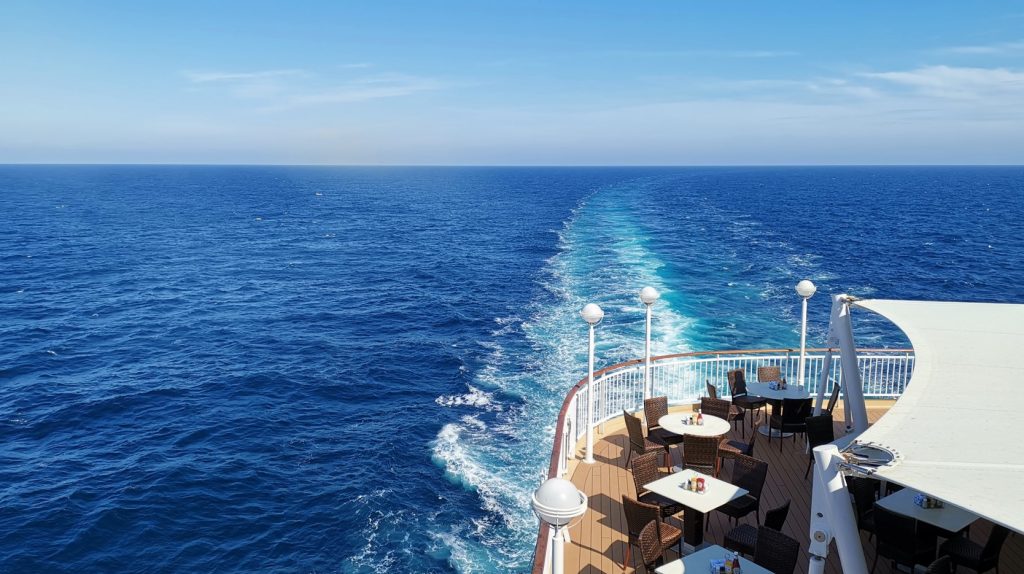
WATER SALUTE: A ceremonial gesture performed by fireboats or water-carrying vessels to honor and welcome a ship as it arrives or departs from a port.
WAVE SEASON: A period when cruise lines offer promotions and discounts, typically from January to March, encouraging bookings during this favorable time.
WET DOCK: A floating dock used for ship repairs, maintenance, and inspections, ensuring the ship remains in optimal condition for safe and efficient operations.
WINDWARD: The side of the ship facing into the wind, experiencing windward conditions, often impacting sailing comfort and navigation.